
All categories
Featured selections
Trade Assurance
Buyer Central
Help Center
Get the app
Become a supplier

(8898 products available)




















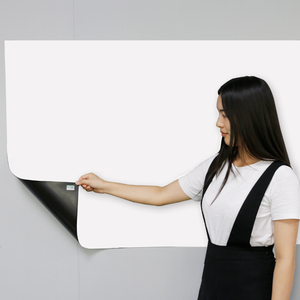
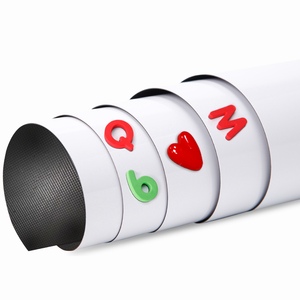
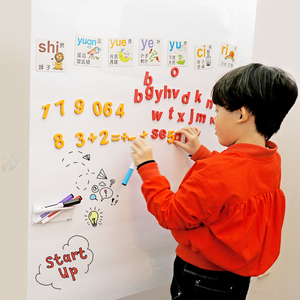

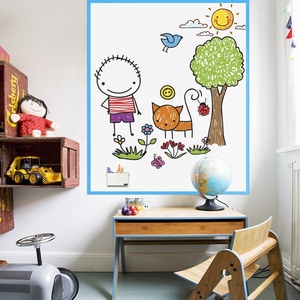
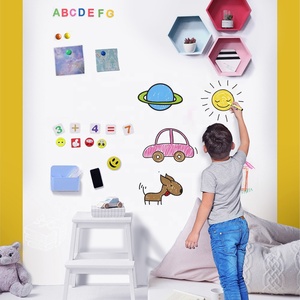













Paper whiteboard can be categorized into several types based on design, usage, and features.
Dry Erase Chart Paper
One of the simplest forms of whiteboard paper is chart paper, designed specifically for making charts and large diagrams. Often larger than standard sheets, this type of whiteboard paper is ideal for group brainstorming, project planning, and any activity that requires large-scale visuals. It is self-adhesive and can be stuck on walls, making it great for presentations and changing locations. The dry-erase surface allows for repeated use without leaving any permanent marks.
Standard Sheets
These are similar to ordinary sheets of paper but offer a dry-erase surface on both sides. This type of the paper is perfect for individual use, as it fits easily into binders or can be distributed easily in classrooms or offices. These sheets come in various sizes, although A4 and letter size are the most commonly used. These sheets are versatile as they allow for portability and personal use such as for notes, sketches, and quick reminders.
Notebook-Sized Dry Erase Paper
This type of whiteboard paper is optimized for notebooks. It allows users to write on it as if it were a notebook, but it has a dry-erase surface. This format is especially popular for digital note-taking and personal planning. Users can make multiple entries, and the pages can often be resealed or reused, optimizing them for long-term use. Users enjoy the familiarity of a notebook format but with the added benefit of being erasable.
Wall Decal Dry Erase Paper
This innovative product combines the features of decals and dry-erase boards. The wall decal paper allows for the creation of custom-sized whiteboards that can be easily transferred to different surfaces. It is ideal for home or office use, allowing for personalized whiteboard space without the need for heavy installation. This type is also popular for kids' rooms, as users can create their scenes or educational tools that are easily removable.
Magnetic Dry Erase Paper
This kind of whiteboard paper includes a magnetic backing, which is ideal for surfaces such as refrigerators or any metal surface. The paper is unique in that it allows for easy access to the paper on any magnetic surface while additionally providing the ability to write on it. This format is ideal for home use, especially in kitchens, or for quick tips, reminders, or educational games. Its magnetic feature allows it to be portable and stay in place wherever needed.
The design of paper whiteboards focuses on the usability and functionality of its surface and underlying structure.
Surface Coating
The surface of paper whiteboards is generally coated to enable easy writing and erasing. Most whiteboard papers have a glossy, smooth finish, optimizing them for dry-erase markers. This type of surface is designed to be easily wiped clean without leaving smudges or shadows of what was previously written. Some models also include textures to enhance grip for the marker, increasing writing comfort and reducing fatigue for the user.
Adhesive Backing
Adhesive backing is another critical design feature of whiteboard paper. Most designs are peel-and-stick, making installation simple without the need for additional glue or tape. The adhesive is designed to provide a strong but removable bond, allowing the paper to be repositioned multiple times. The adhesive layer is also engineered to be safe on walls, ensuring that no sticky residue or damage is left behind when the paper is removed.
Portability and Resealability
One of the major advantages of this paper is its portability. Many versions come with a protective backing that can be resealed after the paper has been exposed or used. This allows the users to store their whiteboard paper conveniently and later reuse it without compromising its functionality. This is especially useful for on-the-go users who need a portable solution.
Sizing and Scalability
Whiteboard paper is also available in different sizes. For example, it could be available in large rolls for creating expansive surfaces or in smaller sheets for targeted projects. This means that whiteboard paper is scalable, depending on individual needs. Some types can even be joined together seamlessly, so large-size configurations can be made depending on requirements.
Paper whiteboard comes with varying specifications and maintenance tips for optimal durability.
Thickness and Size
Generally, whiteboard paper comes in various thicknesses. Thinner paper is ideal for quick, portable use. In contrast, thicker options provide more durability for long-term projects. Size usually ranges from small sheets to large rolls or wall decals, depending on user needs. Those opting for large or continuous formats need to ensure that the cutting tools are sharp to avoid ragged edges.
Dry-Erase Compatibility
The dry-erase labels surface can differ by model. Most have a low-friction coating that enhances the ability to write and erase smoothly. Compatibility with all kinds of dry-erase markers is important to avoid staining the surface. Level of marker bleed-through also differs depending on the kind of paper, so tests are recommended to determine which markers work best.
Temporary Adhesives
The adhesive layer is important for the temporary bond that paper whiteboards provide. Users should ensure that the paper is pressed down firmly to eliminate air pockets to achieve a good bond. It is also important to check for any signs of wear on the adhesive if it is being used in a high-traffic area. Further, the paper should be replaced immediately once the stickiness is gone, as it may impact its effectiveness.
Erasing and Cleaning
Caring for paper whiteboards is essential for long-lasting use, as this limits the amount of residue that is left behind on the surface. Users should get into the habit of cleaning the surface with a dry cloth or eraser after every use. For deep cleaning, a damp cloth should be used along with mild cleaning solutions. Harsh chemicals should be avoided as these may damage the surface or adhesive underneath the paper.
Storage and Protection
Some versions of whiteboard paper require special care in storage. Ideally, the backing should be reapplied after each use to protect the adhesive. The paper should also be rolled up carefully to avoid developing creases or wrinkles. In cases where the paper is not resealable, users should consider storing it in a protective sleeve to avoid damage.
Paper whiteboards are adaptable and find their usage in many situations.
Classrooms
The educational setting is the most widely used area for white board paper. Teachers often use large chart papers to create interactive learning experiences. These enable them to make customized lessons, show dynamic concepts, or even create classroom rules. This also promotes more active participation among students due to its collaborative character, as students are allowed to contribute to what is written up on the boards.
Offices
Businesses employ this whiteboard paper for brainstorming sessions, strategic planning, and course mapping. Whiteboard paper allows teams to visualize ideas quickly, making it an integral part of the creative process. Its portability means that teams can move their discussions around or take them to another location. This enables the continuous flow of ideas that are essential in dynamic working environments.
Home Use
The paper whiteboards are great for organizing and reminding people at home. Families stick reminders, schedules, or meal plans on their refrigerators or other surfaces. Children’s rooms can have whiteboard decals for learning games or creative activities. This transforms ordinary spaces into interactive tools for communication and creativity. Thus, it helps to reduce clutter while increasing the level of engagement.
Events and Workshops
Second, it is widely used for temporary applications at events, conferences, and workshops. Large-format whiteboard paper is often used for participant contributions at this sort of event, whether it is an idea-gathering or brainstorming session. This visual nature makes discussions more active. It also provides facilitators with insightful, real-time input that can be useful for capturing data at on-the-spot events.
Personal Projects and Planning
Lastly, it can be used for paper whiteboards in personal projects as Digital Note-Taking. It can range from planning art projects to organizing future travel, this versatile tool allows for flexible mapping of ideas. The users have the freedom to draw, write, and then erase as their plans evolve. It thus makes it an ideal option for anyone seeking a quick, no-mess solution for creative endeavors.
A1: Most types of whiteboards are peel-and-stick. The protective backing must be peeled off before sticking the adhesive side to the desired surface. For best results, the surface should first be cleaned to make sure it is free of dust and grease.
A2: The majority of the whiteboard paper that is made today is from sustainable sources. Further, several manufacturers offer recyclable or biodegradable options to mitigate the impact on the environment.
A3: When maintained properly, paper whiteboards can last several years. However, frequent use should usually be accompanied by cleaning it regularly to maximize its lifespan. Some types are specially designed to be replaceable when they show signs of wear.
A4: Paper whiteboards are cheaper in the short term, more portable, and easier to install. Glass and plastic whiteboards, on the other hand, are more durable and provide a smoother writing surface.
A5:While the standard option for whiteboard paper is white for dry-erase tasks, colored versions are also available. Should a user needs to have distinct borders or prefers to work with a surface that is not white, several manufacturers have available papers in a spectrum of colors to suit their needs.